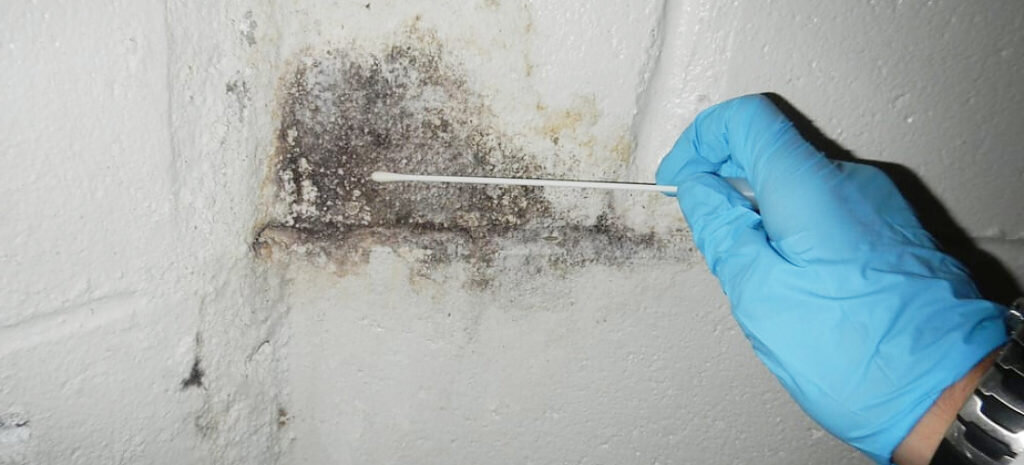Specialist Tips for Message Mold Removal Success
In the world of mold and mildew removal, effectively removing mold is only half the fight; the real obstacle exists in stopping its reappearance. By sticking to professional ideas and ideal practices, individuals can protect their areas against mold revival and maintain a healthy and balanced indoor atmosphere.
Display Moisture Degrees Frequently
After finishing mold removal treatments, preserving optimal moisture levels is important to protect against mold and mildew re-growth and make certain a healthy and balanced indoor environment. High moisture levels over 60% develop a conducive setting for mold and mildew to prosper, making routine keeping an eye on a positive action to avoid any type of future mold concerns.
Utilizing hygrometers or wetness meters can help in precisely gauging humidity levels in different areas of the residential property. These devices provide real-time data that allows removal experts to make enlightened choices pertaining to air flow, dehumidification, and other needed activities to maintain optimal moisture degrees post-remediation. Additionally, developing a routine schedule for moisture checks, especially in high-risk locations such as kitchen areas, cellars, and restrooms, is an aggressive method to mold avoidance. By continually keeping an eye on moisture levels, building owners can effectively reduce the danger of mold reoccurrence and maintain a healthy indoor atmosphere post-remediation.
Conduct Thorough Inspections Post-Remediation
Complying with the conclusion of mold removal procedures, it is critical to perform extensive evaluations to validate the performance of the removal process. These post-remediation assessments are essential in ensuring that the mold problem has actually been effectively attended to and that there is no recurrence or remaining mold development. Inspections should be performed by qualified specialists that have knowledge in identifying mold and analyzing indoor air top quality.
Throughout these assessments, various techniques such as aesthetic assessments, air tasting, and surface area sampling might be employed to completely review the remediated areas. Aesthetic evaluations include a thorough evaluation of the facilities to look for any noticeable signs of mold and mildew development or water damages. Air sampling aids in figuring out the air-borne mold and mildew spore levels, while surface sampling can spot mold bits on surface areas.
Implement Appropriate Air Flow Approaches
After making sure the performance of the mold removal procedure through thorough inspections, the next critical action is to focus on implementing correct ventilation methods. Adequate ventilation is crucial in stopping mold and mildew reoccurrence by regulating wetness degrees and advertising air blood circulation.
Proper ventilation not just aids in protecting against mold and mildew development yet additionally adds to the total wellness and convenience of owners. By making sure ample air flow throughout the home, you can lower the threat of mold and mildew regrowth and produce a healthier living setting. Normal maintenance of air flow systems, consisting of cleaning and filter replacements, is essential to sustaining reliable ventilation. Consulting with heating and cooling experts can provide more insights into maximizing air flow approaches for your details residential property needs.

Usage Mold-Resistant Materials for Services
To enhance the long-term review effectiveness of mold remediation efforts, incorporating mold-resistant products for repair work is important in mitigating the risk of future mold and mildew growth. Mold-resistant products are made to endure wetness and hinder mold and mildew growth, making them an important option for locations prone to moisture and humidity. When repairing areas impacted by mold, using materials such as mold-resistant drywall, mold-resistant paints, and mold-resistant caulking can assist avoid mold and mildew recurrence.
Mold-resistant drywall is an excellent option to standard drywall in areas like washrooms and basements where moisture degrees are higher. When subjected to damp conditions, this kind of drywall has an unique finishing that resists mold and mildew growth also. In addition, utilizing mold-resistant paints containing antimicrobial representatives can additionally inhibit mold development on wall surfaces and ceilings.
In areas where dampness prevails, such as shower rooms and kitchen areas, using mold-resistant caulking around bathtubs, windows, and sinks can help secure out water and stop mold from holding in cracks and holes. By buying these mold-resistant products throughout repairs post-remediation, you can substantially decrease the possibility of future mold and mildew concerns and preserve a much healthier interior environment.
Maintain Sanitation and Address Water Issues
After mold and mildew remediation, it is important to keep a tidy mold removal machine environment to web link stop the regrowth of mold. Leaks, water invasion, or high humidity levels can develop the best reproduction ground for mold and mildew, so it is crucial to repair any water-related troubles right away.
To preserve sanitation, think about making use of HEPA filters in vacuum cleaners and air purifiers to catch mold spores and prevent their flow airborne. Making sure correct ventilation in locations vulnerable to moisture buildup, such as restrooms and kitchen areas, can aid keep moisture levels in check. By staying watchful regarding cleanliness and resolving water concerns immediately, you can successfully stop mold reinfestation and keep a healthy and balanced indoor atmosphere.
Conclusion

In the realm of mold and mildew remediation, successfully eradicating mold and mildew is just half the battle; the real obstacle exists in avoiding its reappearance. After completing mold and mildew removal treatments, maintaining optimal humidity degrees is essential to stop mold re-growth and guarantee a healthy interior setting. High humidity levels over 60% create a favorable setting for mold and mildew to flourish, making routine checking an aggressive procedure to stop any future mold and mildew issues.
To boost the long-term effectiveness of mold removal efforts, incorporating mold-resistant products for fixings is critical in alleviating the danger of future mold and mildew development. After mold and mildew removal, it is vital to maintain a tidy setting to protect against the regrowth of mold and mildew.